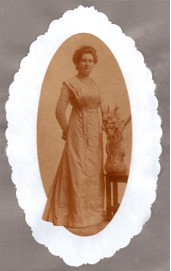
Bridgetta (Connaughty) O’Shea’s Story
Bridgetta Connaughty was born in Fond-du-Lac, Wisconsin in 1879. Just months before, her father James Connaughty, was accidentally killed in a hunting accident October 13th, 1878. Her two brothers were listed as the surviving children as her mother Ann was pregnant with Bridgetta at the time. Bridgetta’s mother Ann (Mullaly) Connaughty moved with her three children to Medford Wisconsin to be with her brothers, Patrick and John Mullaly and their families. It was in Medford where Bridgetta and her brothers Timothy and James spent their formative years
Ann’s brother Patrick Mullaly was assigned co-administrator of James’s Connaughty’s estate and was a great support to his sister, the young widowed Ann. Patrick had enlisted in the 17th Infantry of the Union Army during the American Civil War in 1864 and mustered out when the regiment disbanded July 14th, 1865. He went on to become a local politician in Taylor County Wisconsin.
The Mullaly relatives maintained contact with the Connaughty family for years even after the Connaughty brothers Timothy and James bought land near Corinne Saskatchewan, Canada in 1907. Ann Connaughty joined her sons and their families in 1910.

Bridgetta had become a teacher by then. Her first recorded teaching experience in 1907, was at Mellon School in Morse, Ashland County, Northern Wisconsin near Lake Superior. In 1881 the newly formed Bad River Lumbering and Improvement Company began building a mill town where the Wisconsin Central Railroad line touched the Bad River. The company had a sawmill, a shingle and lath mill, a boarding house, a store, a blacksmith shop, and lumber sheds. 600 people lived in Morse in 1895 but this number was reduced after a fire in 1900. It would be another 10 years before the town began to recover so when Bridgetta taught there the population was less than 600.
No records were found to document Bridgetta’s attendance at Normal School. Teaching in rural schools at the time did not require such preparation. Some classes were offered in high school for students wishing to teach lower grades and rural schools with as little as a grade eight education.
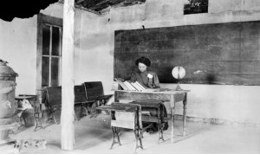
A mid-West rural School History states:
Teaching in some rural schools presented numerous challenges. Rural districts had limited budgets, and the length of a school year varied greatly, even among neighboring schools. Seldom did a teacher stay at the same school for more than two consecutive years, making it hard to track student progress. Additionally, inconsistent curricula and the high number of non-English-speaking immigrant children in many rural schools meant teachers could not count on a student’s age to determine his or her grade level. Invariably, some older students left midyear to help on homesteads, to find wage work, or their parents felt they did not need additional education. In addition to teaching, rural teachers cleaned and maintained their schools. Rural schools lacked indoor plumbing and were heated by woodstoves, so teachers carried water and chopped firewood.

In 1908 Bridgetta went from Northern Wisconsin to Hunter North Dakota, Cass County, to teach grades 7 & 8. Hunter population was about 600. Here too, fire had struck the flourishing town at about the same time the fire had struck the town of Morse. Before the Hunter fire could be contained, most of the buildings on Main Street had been burned. Main Street was substantially rebuilt by 1906.
Bridgetta’s personal records place her in both the Hunter School District and in Oshkosh School District, Wells County, North Dakota over a five-year period from 1908 to 1913. Starting out in Hunter, she moved to Oshkosh and then returned to Hunter upon the request of the earlier school superintendent. The offer to return to Hunter included the opportunity to teach English levels I, II and III and Algebra in the high school grades. A letter of recommendation written by the school superintendent documents Bridgetta’s teaching abilities:
To whom it may concern-
This is to certify that I am personally acquainted with Bridgetta Connaughty who has been employed as a teacher in our seventh and eighth grades for the past year. She is a lady of sterling character, of pleasing personality and excellent attainments.
As a teacher, we have been so well pleased with her work that we feel that you can not praise her work here too highly. She possesses a love for her work, a broad knowledge of her subjects, soundness of judgement and much tact.
She is a success as a disciplinarian having taken hold of a difficult room she soon brought order out of chaos and did it with apparently little effort. She is firm and soon impresses the pupil with her earnestness which soon becomes contagious.
It may be that convenient access to transportation to the family in Saskatchewan factored in to Bridgetta’s choice of schools at the time as she was known to have come to Wilcox over the years when schools were out during both the summer and winter months. Bridgetta was the main provider of financial support for her mother as both brothers were establishing their farms and families in this new prairie province. The County Seat in Oshkosh Township, Wells County is on the “Soo Line”. Destinations north go through Portal to Estevan, Weyburn, Yellow Grass and Moose Jaw Saskatchewan with the terminus in Moose Jaw. The line extended southeast to the Twin Cities Minneapolis-St. Paul. Milestone Saskatchewan, was named after C. W. Milestone, superintendent of the New Soo Line in 1893. Both Wilcox, where the Connaughty’s settled, and Milestone were on the Soo Line.
The last documentation of Bridgetta’s teaching experience in the US was in Montana 1917-1920 where she taught at Kennedy School, Greve, Phillips County, Montana. Throughout her teaching experience Bridgetta had taken further qualifying exams to attain her 1st class standing. Her Montana Teaching Certificate dated June 5, 1919 cites her passing all subjects with an average of 89%. This was the highest level of Teaching Certificate and included the qualifications for teaching High School. The 1920 Federal Census lists Bridgetta Connaughty, (single) teacher in Phillips County, School District 36.
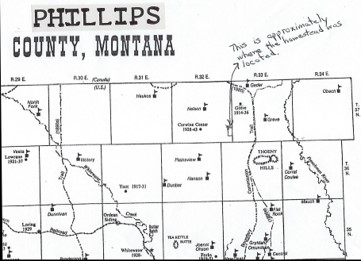
One point of interest is that while in Greve, Montana Bridgetta obtained a 320-acre homestead- Township 37, Range 32, Section 25, a township near the Canada/US border. Her application was made while teaching at Kennedy School in Greve. At the time she also applied for a livestock brand, -17. As the homestead was not developed it is not known what Bridgetta had in mind for the use of a brand, a horse? Cattle?

Under the original Homestead Act 1862 heads of family could claim 160 acres of contiguous government land. To be eligible, an applicant had to be twenty-one years of age, as well as a U.S. citizen, or an alien who had filed for citizenship. Applicants had to live on the homestead for five years and make certain improvements to gain title to the land. By Armistice Day in 1918, according to one governmental publication, Montana state’s population had climbed to an astounding 769,590. Remarkably, the population had more than tripled in less than twenty years, and with this wave of settlement, hundreds of new towns and no fewer than twenty-eight new counties had been created.
Plans, it would seem, changed! In November of 1919 Bridgetta’s North Portal Customs entry document, lists her as planning to emigrate to Canada. In 1920-21 she began teaching at a Convent School in Wilcox Saskatchewan. That year the Sisters of Charity of St. Louis and the St. Augustine parish priest Father Benoit, opened the Notre Dame of the Prairies Convent and St. Augustine residential elementary and high school for boys and girls in Wilcox, Saskatchewan. Bridgetta at age 42 became the first teacher who was not of a religious order to teach school at the convent that year. This was seven years before Father Murray was appointed to the parish and began the high school program at the school and later Notre Dame College.
By the spring of 1919 drought spread over all of eastern and central Montana, where temperatures hovered between 100 and 110 degrees. Ominous brown-grey clouds of dust rolled across the vast horizon, denuding 2,000,000 acres and partially destroying millions more. By the fall of 1918—just as the War in Europe was coming to an end—the haunting face of depression appeared everywhere and there was no end in sight. The homesteaders left Montana even more quickly than they had come. The exodus started in the fall of 1917 and by 1919, when the post-war drop in wheat prices created an even more impossible situation, they left in droves.
It is not known just how or when Bridgetta met her future husband Dr. Joseph Patrick O’Shea but his earlier medical practice had been in the South Saskatchewan village of Radville, not far from Wilcox. Her visits to family from 1911 to 1917, when Dr. Joseph O’Shea was in Radville may have resulted in communication prior to his enlistment or, they may have met when he returned to Saskatchewan after the war. An excerpt from the Wilcox Times, April 27, 1922 records their marriage of April 24th that year. A few letters from Joseph were kept for posterity by Bridgetta as they were planning details just prior to their wedding day. They were sent from Joe’s address in Norquay where he had established his practice since returning to Canada from service in England and France. The Wilcox paper records their wedding:
One of Wilcox’s most popular young ladies left town Monday night mid a shower of rice, confetti, and accompanied by a volley of cheers which well-nigh drowned the conductor’s “all Aboard” and even the whistle of the C.P.R. engine. She whom all knew well, the former Miss Bridgetta Connaughty and the present Mrs. Doctor O’Shea, on the arm of her husband was leaving for her future home in Norquay. Monday morning the wedding took place in St Augustine’s Church. Mr. and Mrs. Tim Connaughty had the honor of acting as best man and bridesmaid while the pastor performed the ceremony. A very dainty breakfast was served by Mrs. T.J. Connaughty and Mrs. James Connaughty for the newly-weds, the relatives and a few guests.
In the evening most of the community of Wilcox was down to the train to see them off! The bride was becomingly dressed in a dark navy-blue dress, wearing a Gainsborough model hat of Iodine color embroidered with silver and in lieu of flowers at the wedding; she carried her prayer book, the gift of the pastor.
They left for Norquay after the wedding.
The O’Sheas lived in Norquay until 1927 when they moved to Fife Lake in south-central Saskatchewan. The previous year a considerable number of placer claims had been staked mostly along the North and South Saskatchewan Rivers. Family members recall hearing talk of gold findings around Fife Lake but it is not known just how much this may have been a draw. Much of the gold was called flour gold due to it being very fine. In 1931 claims were staked along a tributary of the Poplar River and Fife Lake area but there was no significant production. The O’Sheas lived in Fife Lake until 1933.
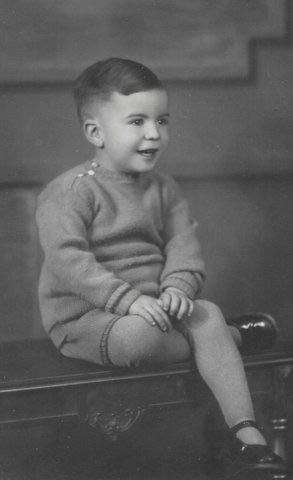
Bridgetta insisted that when Merlin was ready for school, he attend a proper Catholic School located in Yorkton, 100 kms away. The village of Norquay’s population was just around 300 people at the time. While Merlin’s school days were not pleasant times, as he was away from home, his summer holidays were enjoyed at Crystal Lake where he and his mother stayed all summer long. His dad would come out on weekends. Dr. O’Shea bought a farm four miles north of Norquay, as an investment and rented it out to a local farmer.
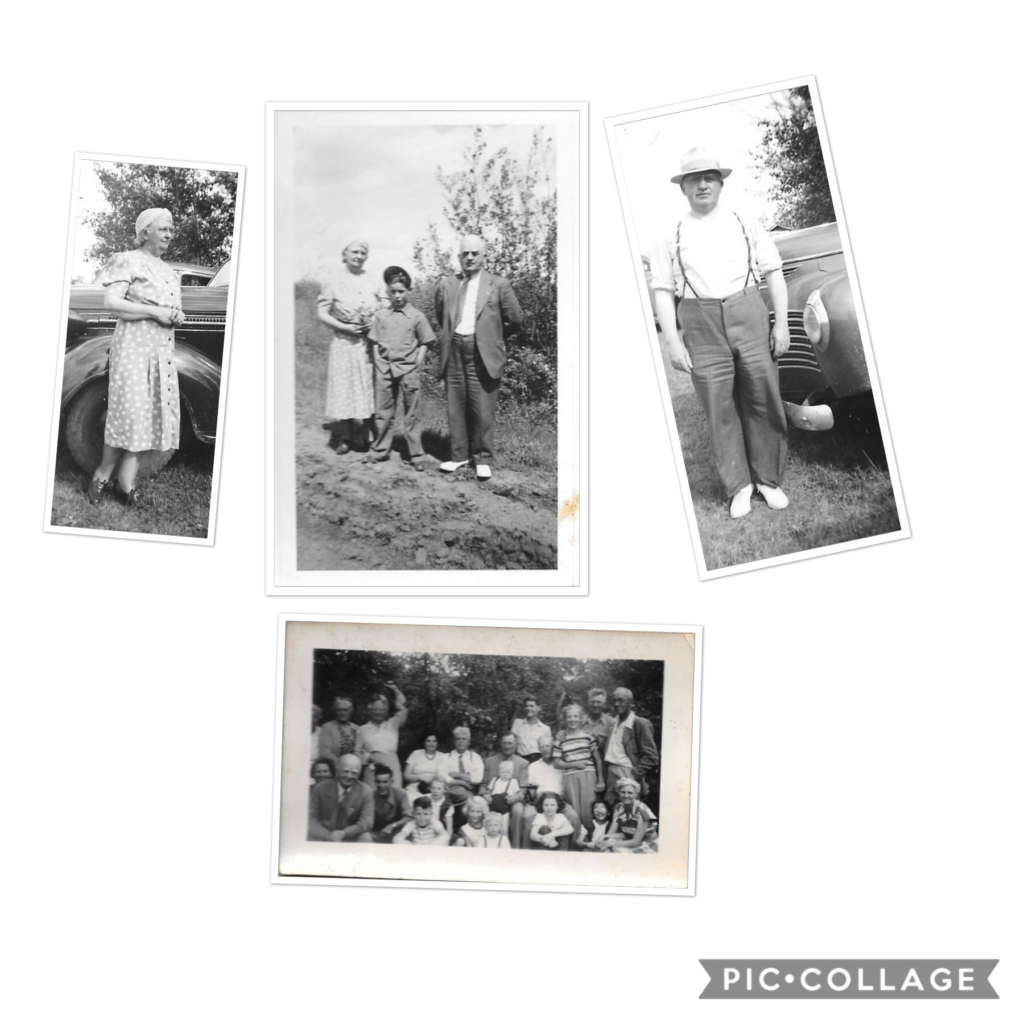
In 1947 the year Dr. Joe retired. Bridgetta, Joe and Merlin spent the winter in Chilliwack, BC. It was a winter of snow storms and bad weather so the family moved back to Wilcox the next year where they bought a small house. Here they became acquainted with Father Athol Murray who had come to Notre Dame just after Bridgetta and Joe were married. Their bond was close especially as Joe, having lived and studied in Quebec, was bilingual as was “Pere”. Merlin, still living with his family at the time, became a student at Notre Dame College and, as Dr O’Shea always had a car, Merlin was frequently a driver for Pere Murray.
In 1951, Dr. Joe passed away. Bridgetta was in the hospital in Regina at the time, having had gall bladder surgery when the ambulance brought Joe, having suffered a heart attack, to the same hospital, where he died. After this Merlin and his mother moved from Wilcox to Regina. Bridgetta, passed away in 1954. She, too, had a heart attack walking down Albert Street, on her way downtown to pay the power bill. Merlin was 25 years old.
Merlin’s fascination with cars played a big part in the rest of his life. At age 29 while driving back from the Norquay farm which he kept after his parents both died, he was involved in a single-car accident where his car, as a result of a mechanical failure, rolled over on a gravel highway resulting in life-threatening injuries that left him disabled for the rest of his life. He had met the young woman he planned to marry not long before that but it wasn’t until a year after the accident that they married. On October 31st, Halloween, of 1959, Merlin walked down the aisle with braces on his legs and two canes to marry Leslie Maureen Stone.
As with both his parents, Merlin (Doc) died of a heart attack in 1987. He was 58 years old. As was Doc’s experience with the death of his parents, his children were without a father when they were in their twenties. The youngest, Bridget, was just 14.
Many thanks to Sharon Connaughty of Vancouver, B.C. for visiting me in October 2018. This enabled Sharon to compile most of the history of Bridgetta’s journey through life from the memorabilia I had saved. Together we are bringing you this story.
Great story, mom. Very well done.